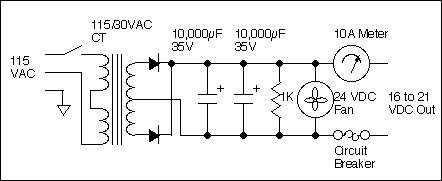Hi all. My railroad is shutdown until I find replacement diodes for my 1997 vintage Ultima 10 amp power supplies. I’ve emailed Scott Polk 3 times over the past 2 weeks and get no replies.
Does anyone have a part number or source to get replacements? There is no part number on the diodes in the Ultima. space is a bit tight in the case, so what has anyone else used for replacements? What diode values should I be using?
When money becomes available I am going to replace the Ultimas with Mean Well 24v dv 14.6amp units as many of you here use them with great success. Does anyone have a nice wiring flow chart to correctly wire the TE receivers to the mean Wells? which receiver wire goes to positive post on Mean well and which receiver wire goes to negative mean Well post and which wire and where should I put an inline fuse as an additional safety measure for the receivers and locos? Etc??
Especially need to get the diodes replaced in the Ultima so we can run the railroad empire again.
Thanks for any help.
Dick

